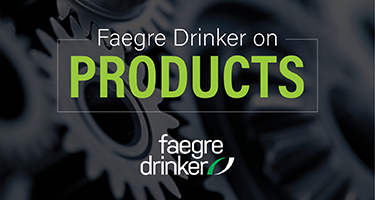In a decision that may impact future e-commerce, the California Court of Appeal held in Bolger v. Amazon.com, LLC that under California law, Amazon could be strictly liable for an allegedly defective battery manufactured by a third-party and sold on its website. The Court further found Amazon was not immune from liability under the Communications Decency Act. The Court reversed the trial court’s grant of summary judgment in favor of Amazon.
Category: Consumer Fraud and Protection
Preemption of Structure/Function Claims
Seen frequently on grocery items, and especially on dietary supplements, structure/function claims describe the role of a nutrient or ingredient in the structure or function of the human body. Examples include “Calcium builds strong bones,” “St. John’s Wort supports mood,” and “Vitamin E supports the immune system.”
The FDA defines and regulates structure/function claims, and FDA requirements generally preempt state-law requirements that are “not identical.” 21 U.S.C. § 343-1(a)(5). So, does compliance with FDA regulations for structure/function claims shield food and supplement manufacturers from lawsuits claiming their structure/function claims are false and misleading?
“Fruit Puree” Held a Fair Game First Ingredient in Fruit Snacks Label by California Court of Appeal
The California Court of Appeal, First Appellate District, recently affirmed judgment in favor of a fruit snack manufacturer who claimed “fruit” was stated to be the first ingredient on a front label but listed “fruit puree” first in the product’s ingredient list.
Plaintiff’s Fruit Snack–Based Claims
Defendants in Iglesias v. Welch Foods, Inc., et al., No. A159565, manufactured fruit snacks with a label that stated, “Fruit is our 1st Ingredient!” at the top of the front label. The snacks’ “Nutrition Fact Panel” then listed “FRUIT PUREE” as the first ingredient, followed by corn syrup.
No Damages? No Tort, Says the Supreme Court of Canada
Consider this: What if plaintiffs could assert a cause of action for negligence without proving, or even pleading, any actual damages? And what if the remedy for this damage-free tort claim were disgorgement of profits allegedly acquired by a breach?
This may seem foreign to American tort lawyers, but for Canadian litigants this cause of action has a name, albeit a confusing one: waiver of tort. It is often pled as an independent, gain-based cause of action, and it is a source of frustration and controversy for our friends in the True North. Indeed, class certification grounded in waiver of tort forces defendants to face the prospect of disgorgement without proof that any class member actually suffered damage, even though these commonly advanced claims have never fully been tried in Canada. Canadian scholars have suggested that this uncertainty has the potential to drive settlement negotiations unfairly in the class context.
Continue reading “No Damages? No Tort, Says the Supreme Court of Canada”
Strange Bedfellows – How a Recent Security Fraud Opinion May Impact Consumer Fraud Class Actions
The U.S. Supreme Court’s recent decision in Liu v. SEC, No. 18-1501 (June 22, 2020), limiting the SEC’s ability to obtain monetary equitable relief in securities fraud litigation, may seem an odd topic for this blog. But Liu is worth some attention because it may foreshadow an impact on calculation and distribution of monetary awards in consumer fraud class actions. The decision may influence the calculation of disgorgement or restitutionary remedies, and it may signal another hurdle for the controversial judge-made distribution mechanism, cy pres.
Liu v. SEC
In Liu, the SEC won summary judgment in an enforcement action for securities fraud, obtaining an award for “disgorgement” of the funds acquired by defendants from their fraudulent scheme. The district court declined to deduct any of defendant’s business expenses to offset the “ill-gotten gains,” awarding all sums fraudulently raised from investors. The Ninth Circuit affirmed, rejecting challenges to both the SEC’s authority to obtain disgorgement and its gross method of calculating the disgorgement award.
Certain Express Misrepresentation Consumer Fraud Act Claims and Product Liability Claims May Coexist According to NJ Supreme Court
In the case on certification from the Third Circuit, the New Jersey Supreme Court ruled that claims for express or affirmative misrepresentations under New Jersey’s Consumer Fraud Act (NJCFA) may be brought simultaneously with claims under the New Jersey Product Liability Act (NJPLA).
In Sun Chemical Corp. v. Fike Corp., plaintiff Sun Chemical Corporation purchased an explosion suppression system from defendant Fike Corporation. The system was to prevent and contain potential explosions in a new dust collection system. On the system’s first day of operation, a fire occurred, and the system’s alarm was activated but inaudible, resulting in an explosion that injured Sun Chemical employees and damaged its facility.

